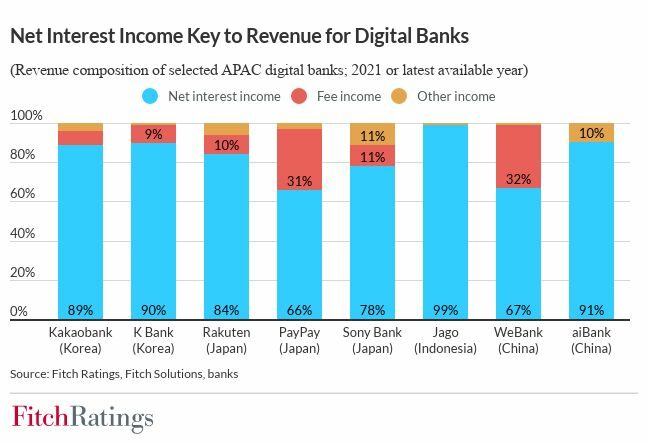Fitch Ratings said Wednesday that it believes that many new digital banks in the Asia-Pacific (APAC) region will find it more challenging to achieve financial viability as interest rates increase, economic growth slows, and funding conditions tighten.
A softer economy could also affect the banks’ target customers disproportionately, raising asset-quality risks, the rating agency said in a statement.
“We expect the current monetary policy tightening cycle will generally support bank credit profiles in Asia, to the extent that higher interest rates lift net interest margins (NIMs),
“However, NIM improvements for digital entrants are likely to be constrained by their more limited pricing power as they seek to boost their deposits and lending business to achieve scale and profitability,” it said.
It also expect NIMs for these entrants to be more influenced by their risk appetite.
“In general, we believe the best opportunities for digital banks in APAC are in markets with larger unbanked populations. However, lending to underserved sectors carries higher risk, with their lower income and limited credit history posing key challenges for digital banks trying to crack the market,
“We expect credit costs to rise more significantly for these segments in a higher-interest-rate environment,” it said.

For new digital banks reliant on future capital injections to fund growth, it said reduced investor appetite and valuations could pose additional challenges, as demonstrated by Volt Bank’s exit in Australia.
“Digital banks in APAC with mature business profiles are also likely to have to settle for slower growth as they contend with increased asset quality risks and funding costs,
“Nonetheless, a number of them are already profitable, helped in many cases by parental linkages providing access to large existing customer bases, easing the task of achieving scale. Some have also been able to grow through identifying lucrative niche segments,” it said.
Most digital banks are not profitable, Simon-Kucher study shows

